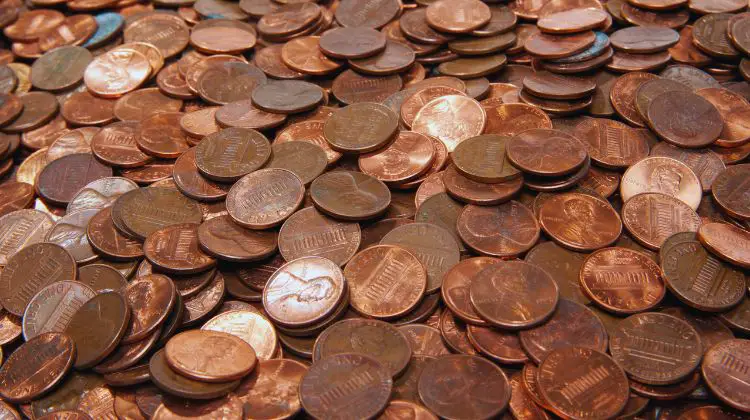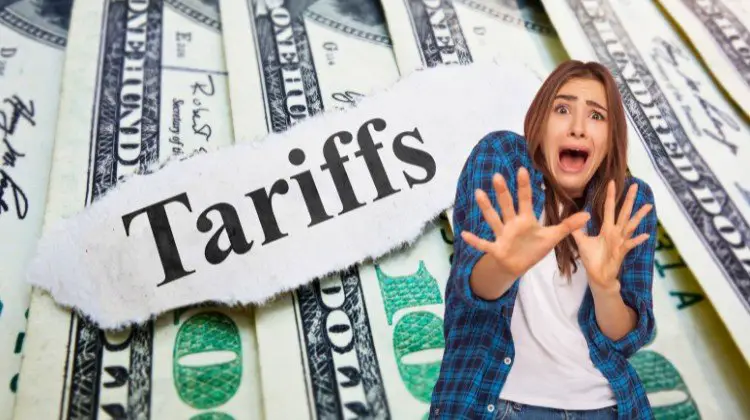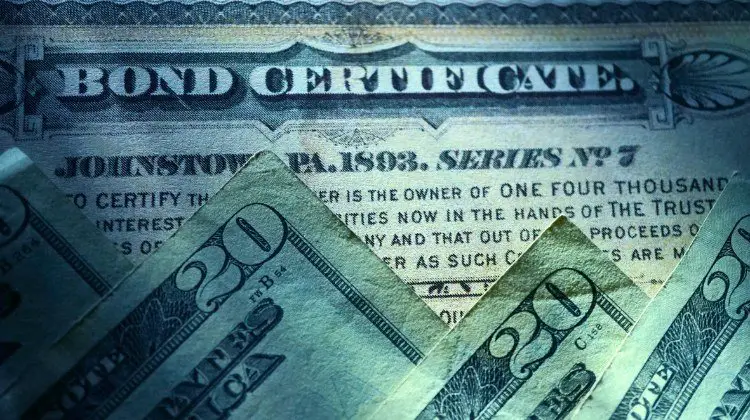The familiar jingle of loose change might soon become a thing of the past. President Donald Trump announced a plan for the US to stop minting pennies, a move that has sparked debate. Many are questioning what this means for our wallets, cash transactions, and our futures.
President Donald Trump wants the US to stop minting pennies because it’s a money-losing venture. The cost of making these cent coins is higher than their face value.
This situation is sometimes called “negative seigniorage.” With production costs, pennies actually lose money for the government, costing American citizens.
Table of Contents:
- The Cost of Making Pennies
- Is it Legal for the US to Stop Minting Pennies?
- Potential Problems Without Pennies
- The Case for Keeping the Penny
- The Case for Eliminating Pennies
- Other Countries Have Done It
- What This Means for You and “US to Stop Minting Pennies”
- What Can Be Learned From History
- FAQs
- Conclusion
The Cost of Making Pennies
It might be hard to believe that it actually costs money to *make* money. But with pennies, that’s absolutely the case.
The U.S. Mint reported losing $85.3 million on penny production in fiscal year 2024. This wasn’t a one-time issue.
According to the Mint’s annual report, the cost of producing a single penny has exceeded its face value for 19 straight years. The Mint’s annual report identifies the rising cost of penny production.
Each penny costs 3.7 cents to make. The costs include 3 cents for production, then 0.7 cents for distribution, according to the latest report. It costs less to print dollar bills at 3.2 cents from the Federal Reserve.
Why Pennies Cost So Much
Pennies are mostly zinc with some copper plating, requiring more resources. Pennies are 97.5% zinc and 2.5% copper.
The costs involve production, administrative work, and distribution. The process requires the smelting process to fuse these materials.
All in, the rising costs get expensive. The rising cost overall to create the penny is alarming to many.
Is it Legal for the US to Stop Minting Pennies?
This is a question many people are probably afraid to ask. Whether the president has the power to do this is up in the air.
The authority to determine which coins are made rests with Congress. The U.S. Mint’s website states this.
But, some legal experts think there might be some wiggle room. Northeastern University professor Robert Triest suggested the Treasury Secretary might have the authority to halt production, even without an act of Congress.
Past Attempts to Get Rid of the Penny
This isn’t a new idea. Lawmakers have introduced bills in the past to pause production or look into alternatives.
None of the bills were ultimately successful. The late Senator John McCain, for example, co-sponsored a bill in 2017 to suspend penny production for 10 years.
His intent was for research to happen. It also involved identifying a ‘doomsday scenario’ to account for unintended issues.
Potential Problems Without Pennies
Many feel the US should stop producing pennies. Others have worries about ditching the penny, particularly at the cash register.
Think of all the potential issues with transactions at checkout. Many people worry about increasing costs as the main issue.
Here are the possible concerns that might be an unintended issue:
- Cash transactions might get more expensive because prices might be rounded up to the nearest nickel.
- The total paid at the register would be higher.
- This could affect the underprivileged even more since they have fewer options.
- There is question whether retailers could just increase sales costs and overhead.
One side argues businesses might round prices *up*, creating a “rounding tax.” Those in underserved communities rely more on physical cash.
They rely more on how they do commerce in real life.
The Nickel Problem
Eliminating the penny could force the Mint to make many more nickels. Nickels cost even *more* to produce than pennies.
Americans for Common Cents did an analysis of production costs. Each nickel costs a staggering 13.8 cents to produce.
Making more nickels could *increase* the Mint’s losses. More nickels would offset any cost-savings of removing the one-cent coin.
The Case for Keeping the Penny
There are arguments on the other side as well. Supporters like Mark Weller, executive director of Americans for Common Cents, worry about consumers and the economy, as he told ABC News in an ABC News Interview.
People fear prices will automatically go up. An expert identifies a ‘doomsday scenario’ of increasing prices.
Pro-penny people feel a valuable charitable method might disappear. There might also be nostalgia, because of special life moments. People would attach sentimentalism to that physical cent.
The Case for Eliminating Pennies
There are those who want to eliminate the penny, beyond saving the government money. Many feel it will promote more efficiency at businesses.
Former Treasury Secretary Scott Bessent advocated to remove the penny to improve efficiency.
The Rise of Cashless Transactions
The reality is many people aren’t using cash as much anymore. CapitalOne Shopping Research shows that 86.9% of transactions in 2024 were cashless.
Philip Diehl, former director of the U.S. Mint, wrote that the penny’s value is too low. It could take less effort to work than to find physical pennies, as seen on Coin Week.
Many Americans for Common Cents are against a cashless society.
Environmental Concerns
There’s also the environmental impact to consider. Mining zinc and copper takes a toll in terms of emissions, energy, and pollution.
Here is a summary of the Environmental Impact:
| Resource | Impact |
|---|---|
| Zinc Mining | Emissions, Energy Use, Pollution |
| Copper Mining | Emissions, Energy Use, Pollution |
| Overall Production | Increased Carbon Footprint |
Other Countries Have Done It
The U.S. wouldn’t be alone in ditching a low-value coin. It wouldn’t be pioneering either, as other nations have done the same for decades.
Several countries around the world already eliminated their low-value coins from circulation.
Who else?
Several countries have already done this. Canada stopped minting its penny in 2012.
Even some European nations are phasing out their smallest coins. Australia and New Zealand are other examples.
Canada even went as far as to collect and recycle the physical coins.
What This Means for You and “US to Stop Minting Pennies”
Ultimately there will be good news and bad news for consumers. For individuals, it will depend on those payment transactions.
- Cash payments might take less effort with things rounded, but that will affect low-income Americans.
- It may become a big surprise one day and shock people when old pennies in collection become rare.
- So there will become a need for more collectable pennies in the future.
Even today, a penny with errors might have high dollar value. People should research the true value of that small one-cent change.
Some physical pennies now have value greater than their “original face value”. This can happen because of mistakes that gives a penny it’s true history.
What Can Be Learned From History
History has proven many times that small-change can get valuable later. Even decades or centuries later when discovered by our modern world for the US to stop producing pennies.
For the US to stop producing a product will solidify its scarcity. A Trump order could do that today.
It happened in the past with older money like old-pennies, half-cent coins and even various bills. This happened back as recent as 1857.
At that time the government approved the Coinage Act of 1857. A Trump order can get action moving, like other historical examples.
FAQs
What did Trump say about producing pennies?
Former President Donald Trump wrote and shared executive orders to explore actions for fiscal year budget planning that involved cost-savings, including to stop producing pennies.
Can I still use pennies as payment?
Yes. No formal action has occurred with the removal of the one-cent coin as legal tender, and still requires Congress authorizes to occur.
What does CNN Business say about pennies?
Various news sources have outlined that the penny cost more to make than their face value. This helps put clarity in potential plans.
Are pennies valuable?
Yes, there are historical situations where coins and rare ones get a high value today for collectors. Even errors can give the penny more value, depending.
Conclusion
The debate over the penny is filled with several layers. You have to consider cost and money production to usage, impact, and influence.
There are also people’s beliefs, views, thoughts, and life experiences. Whether you see it as a nuisance or a symbol of America, it could impact everyday life.
Many see it today in their bank accounts. A major focus as part of Trump’s move is for the US to stop minting pennies. This might create changes or shocks.








Reader Interactions